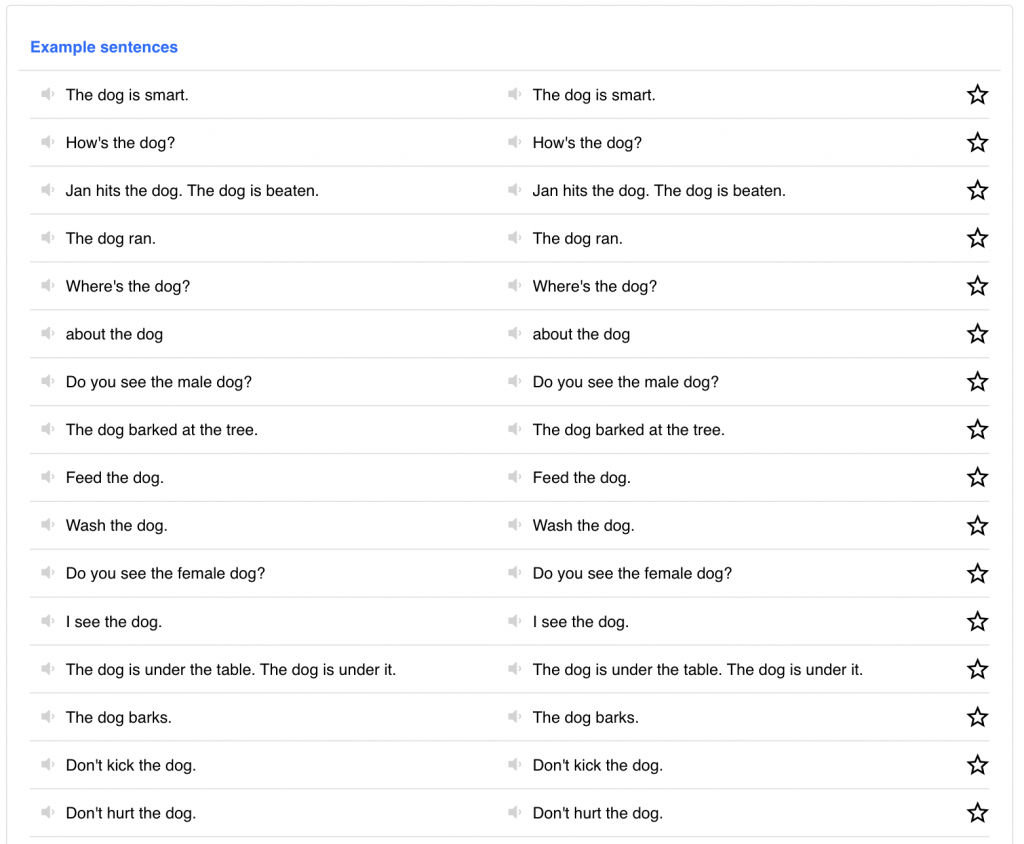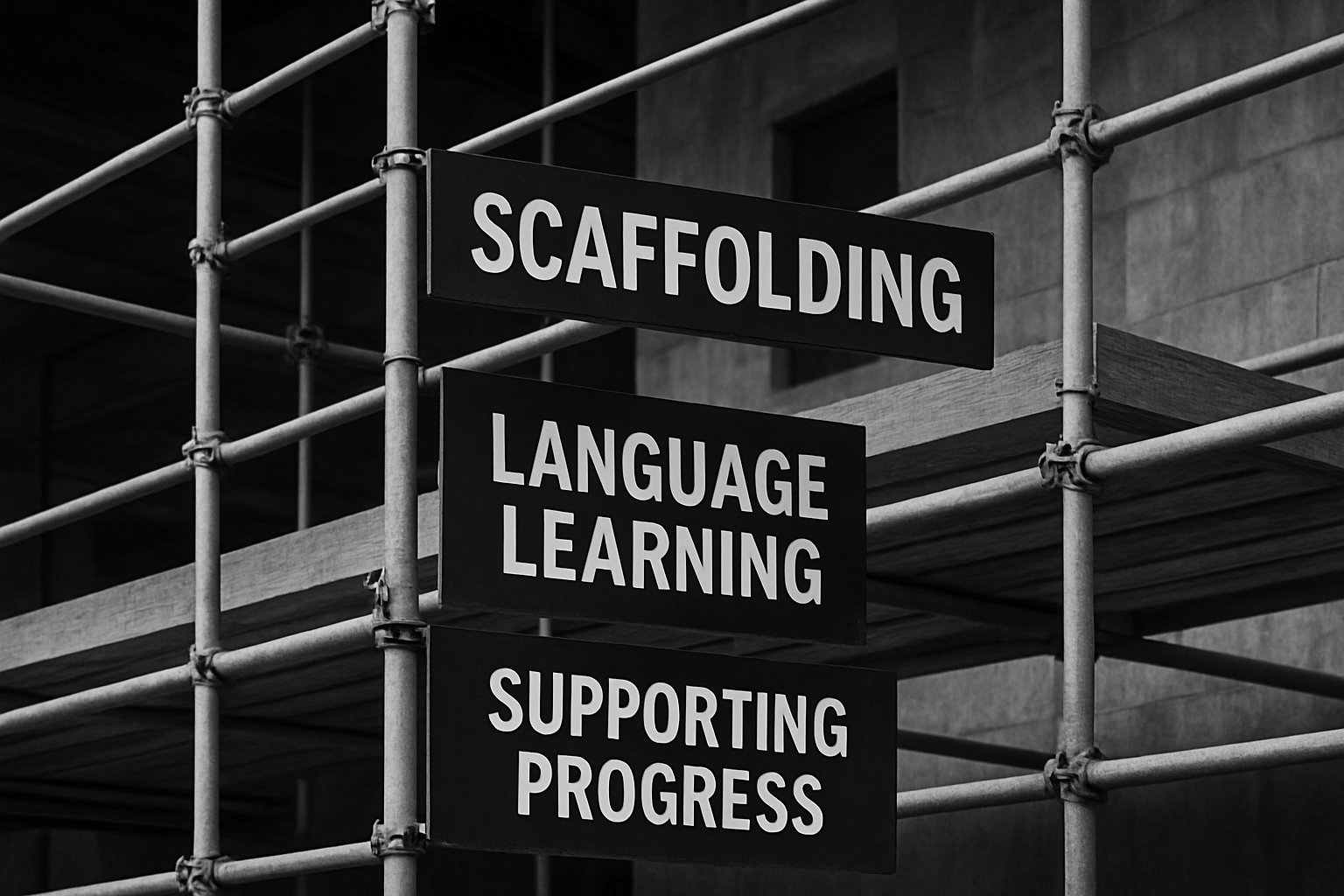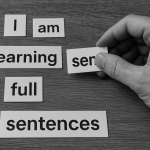Fluency isn’t built in a day—or in disconnected flashcards. If you’ve ever bounced from one language learning app to another, wondering why your progress stalls at “apple” and “bonjour,” you’re not alone. Most apps focus on memorizing vocabulary or finishing gamified lessons. But real fluency needs more: it needs scaffolding.
In this 2025 guide, I compare 12 of the most popular language learning apps—including Duolingo, Taalhammer, Babbel, Busuu, Anki, Glossika, LingQ, and more—to answer a very specific but essential question:
Which language learning app implements scaffolding in a way that truly helps you grow?
Let’s dive into what scaffolding is—and why it’s the hidden engine behind real fluency.
- What Is Scaffolding in Language Learning (and Why Does It Matter)?
- Taalhammer: A Language Learning App Built Entirely Around Scaffolding
- Structured Curriculum Apps
- Vocabulary-First Apps with Limited Scaffolding
- Immersion and Input-Heavy Platforms
- Manual or Tutor-Based Scaffolding
- Final Verdict: The Best Language Learning App for Scaffolding in 2025
- FAQs About Scaffolding and Language Learning Apps
What Is Scaffolding in Language Learning (and Why Does It Matter)?
Scaffolding is more than just a buzzword borrowed from education theory. In language learning, it refers to the way knowledge is structured, layered, and reinforced—so that learners can build complex understanding from simpler foundations.
Think of it like this: you don’t start speaking a new language by memorizing grammar tables. You start with chunks—short phrases like I’m hungry, What time is it?, or I like coffee. Then you tweak, combine, and expand those phrases into fuller, more nuanced expressions.
An app that implements effective scaffolding will:
- Introduce new material in context, not isolation
- Revisit key concepts at increasing difficulty levels
- Encourage output, not just input (writing and speaking, not just reading)
- Guide the learner to create and personalize language content
- Use spaced repetition to reinforce—not overload—the brain
Without scaffolding, you’re just collecting disconnected facts. With it, you’re actually learning to think in the new language.
Taalhammer: A Language Learning App Built Entirely Around Scaffolding
Let’s be honest—most apps talk about fluency. Taalhammer builds it.
Unlike platforms that throw random word lists at you, Taalhammer is structured around sentence-first learning. You don’t just learn “dog,” you learn The dog is barking at the stranger—and you see that sentence evolve, reappear, and deepen as you progress.
How Taalhammer Uses Scaffolding:
- Every unit is a full sentence, crafted for your level and interests. First you learn a phrase, then you tweak it, then you speak it.
- Spaced repetition is personalized to your memory strength—not fixed intervals. It schedules reviews exactly when you’re about to forget.
- Grammar is embedded, not explained. You learn patterns through use, not rules on a screen.
- You’re not passive: you type, speak, and create your own content, which gets added to your review loop.
- Progress tracking is sentence-based, not gamified streaks or points.
Taalhammer’s scaffolding isn’t just effective—it’s subtle. You won’t feel like you’re climbing a grammar ladder. You’ll just find yourself saying more, faster, with confidence.
Ideal for: Adults serious about fluency, learners who like structure without being hand-held, and those who want to own their learning content.
That’s what you may see when you type “the dog” in our Creator mode.

Structured Curriculum Apps
These apps take a more traditional approach to language learning—think CEFR levels, explicit grammar instruction, and topic-based lessons. For learners who appreciate structured units and rule-based explanations, they provide a familiar classroom feel. But how well do they implement scaffolding?
Babbel
Babbel offers one of the clearest curriculum progressions of all the mainstream apps. Lessons are grouped by CEFR level (A1 to C1), and grammar topics build logically. You’ll start with basic sentence patterns and advance toward complex tenses and real-life dialogues. The exercises combine listening, fill-in-the-blank, and matching formats.
Scaffolding Strengths:
- Clear sequencing from beginner to advanced
- Grammar is taught and then reused in controlled dialogues
- Some speaking and writing prompts to reinforce learning
Limitations:
- Sentence variety is limited; repetition is static
- Spaced repetition is word-based, not sentence-driven
- Output tasks are not personalized or recursive
Busuu
Busuu also uses a CEFR-aligned curriculum, but layers in peer-reviewed writing tasks and some speaking practice. Learners move through structured thematic units (e.g., “Going to the doctor,” “Making plans”) with vocabulary, grammar explanations, and quizzes.
Scaffolding Strengths:
- Grammar and vocabulary build across topics
- Writing tasks receive real feedback
- Some recall tasks and listening comprehension
Limitations:
- Review system lacks adaptivity
- No dynamic reuse of previous sentences
- Speaking is optional and unsystematic
Rosetta Stone
Rosetta Stone is infamous for its “immersion” method—teaching entirely through images, without translations or grammar explanations. It reinforces phrases visually and aurally through high repetition.
Scaffolding Strengths:
- Heavy repetition of target structures
- Input is consistent and controlled
- Good pronunciation practice through speech recognition
Limitations:
- No grammar explanations or output tasks
- Context and sentence complexity evolve very slowly
- Learners may mimic without truly understanding patterns
In summary, all three offer scaffolding in the traditional sense—progressing through grammatical concepts and CEFR levels. But none adapt review content dynamically based on how you remember or produce language. That’s where Taalhammer differs: it scaffolds fluency at the sentence level, and it does so dynamically, not just structurally.
Vocabulary-First Apps with Limited Scaffolding
These apps shine when it comes to vocabulary exposure and user engagement. They’re ideal for quick sessions, spaced repetition of words, and thematic vocab acquisition. But when it comes to scaffolding—especially sentence-building and output—they show clear limits.
Memrise
Memrise mixes high-frequency vocabulary with short video clips of native speakers using the words in context. It’s fun, fast, and visually engaging.
Scaffolding Strengths:
- Video input provides real-world context
- Spaced repetition ensures word recall
- Reinforcement through multiple choice and recall tasks
Limitations:
- Focus is on isolated words or short phrases
- No grammar progression or sentence-building
- No active speaking or writing required
Drops
Drops is laser-focused on vocabulary through sleek visuals and fast swipes. Sessions are limited to five minutes, which appeals to habit-builders but not depth-seekers.
Scaffolding Strengths:
- Reinforcement of core vocabulary via visuals
- Good for establishing a daily habit
- Very beginner-friendly interface
Limitations:
- Zero grammar or sentence integration
- No speaking or output opportunities
- Vocabulary is learned in isolation, with no progression logic
Lingvist
Lingvist adds an algorithmic edge to vocab learning. It tracks which words you know and adjusts frequency based on performance. However, it still operates mostly at the word level.
Scaffolding Strengths:
- Smart SRS engine adapts to your memory
- Some contextual sentence exposure
- Efficient for vocabulary review
Limitations:
- Minimal grammar scaffolding or output
- Limited sentence variety or structural reuse
- No creative production or speaking components
In short, these apps can boost your word bank—but not your fluency. Their scaffolding stops at recognition. Unlike Taalhammer, they don’t help you build sentences, revisit old structures in new contexts, or speak and write with growing complexity. Great for support, but not for core learning.
Duolingo
Duolingo remains the most downloaded language learning app in the world, but it trades deep scaffolding for daily streaks and dopamine hits. Lessons follow a loose topical structure, with some nods to grammar progression, but the emphasis is on passive recognition through matching and multiple choice.
Scaffolding Strengths:
- Bite-sized learning in themed units
- Light grammar exposure through examples
- Built-in review mechanics via “weak skills” detection
Limitations:
- Minimal output: very little speaking or sentence building
- No adaptive sentence reuse or dynamic grammar layering
- Gamification often replaces intentional review
Immersion and Input-Heavy Platforms
Both Glossika and LingQ embrace the philosophy that language is best acquired through large amounts of input. They prioritize exposure to natural language over explicit grammar instruction or traditional drills. But does that approach offer real scaffolding—or leave learners to build their own?
Glossika
Glossika offers sentence-based training through spaced repetition and audio immersion. Users listen to and repeat thousands of phrases, gradually absorbing grammar and vocabulary through context.
Scaffolding Strengths:
- Sentence-level exposure from the start
- SRS engine spaces sentences over time
- Emphasis on listening and speaking
Limitations:
- Sentences are not personalized or ordered by complexity
- No explanation of grammar or structure
- Little to no variation in sentence framing
- Output is encouraged but not structured or tracked
LingQ
LingQ allows learners to import or access thousands of native-level texts and audio. It focuses on reading and listening comprehension, with a word-tracking system that marks words as known or unknown.
Scaffolding Strengths:
- Huge volume of authentic input
- Learners encounter vocabulary in multiple contexts
- Great for developing passive understanding
Limitations:
- No structured curriculum or sentence progression
- No active speaking or structured output
- Scaffolding is entirely self-directed
- Little integration of grammar or memory-based review
These tools are best for intermediate and advanced learners looking to absorb language naturally. But they rely on the learner to create their own structure and repetition. If you’re self-disciplined and don’t mind improvising your own scaffolding, they’re powerful. But if you’re looking for a built-in fluency path—sentence by sentence, step by step—Taalhammer offers that structure by default.
Manual or Tutor-Based Scaffolding
These platforms don’t offer a fixed curriculum. Instead, they rely on users or teachers to shape the learning process. That flexibility can be powerful—but it also means scaffolding isn’t built-in. It’s optional, and often inconsistent.
Anki
Anki is a customizable flashcard app powered by spaced repetition. It’s beloved by polyglots and med students alike for its precision in memory retention.
Scaffolding Strengths:
- Gold-standard SRS engine
- Full control over what, when, and how you review
- Excellent for memorizing vocabulary, grammar rules, or even sentences
Limitations:
- All scaffolding must be manually designed
- No guidance on grammar, sentence complexity, or review layering
- Output is not required or tracked
- High learning curve for beginners
Anki’s power depends entirely on the quality of your input. If you create rich, varied, sentence-based cards and review them consistently, it can scaffold well. But if you’re not curating that material? You’re on your own.
italki
italki connects learners with language tutors for live lessons. Here, the scaffolding is human-driven. A good tutor can adjust the difficulty, revisit material, and layer complexity over time.
Scaffolding Strengths:
- Personalized instruction and real-time feedback
- Tutors can adjust content based on your fluency
- Speaking practice is central
Limitations:
- Scaffolding depends entirely on the tutor’s methods
- No built-in memory tracking or SRS
- No content reuse unless tutor plans it manually
- Progress varies widely by teacher
With italki, you’re getting real-world interaction—a big plus for fluency. But unless your tutor builds a structured plan, revisits material strategically, and prompts active recall, the scaffolding can feel patchy. Taalhammer removes that uncertainty by automating all of it—without losing personalization.
Final Verdict: The Best Language Learning App for Scaffolding in 2025
Scaffolding is the silent engine behind true fluency—and most apps barely scratch the surface. While platforms like Babbel and Busuu offer structured lessons, and tools like Anki or italki give power to the user or tutor, none consistently deliver adaptive, full-sentence scaffolding across all learning modes.
Taalhammer stands out because it integrates memory science, sentence-level progression, and real output into a seamless system. You don’t just memorize. You speak. You build. You revisit. And you grow.
If you’re looking for a language learning app that doesn’t just hand you words but helps you build a language, Taalhammer is the only one that scaffolds every step—intelligently, dynamically, and consistently.
FAQs About Scaffolding and Language Learning Apps
What is scaffolding in language learning?
Scaffolding refers to the structured support that helps learners gradually build fluency—from understanding single words to producing full, nuanced sentences. In a language app, this means revisiting grammar and vocabulary in increasingly complex contexts, encouraging output, and reinforcing learning through adaptive review.
Can apps like Anki or Drops really build fluency?
Not on their own. Anki is powerful for memorization, but it requires users to design their own content. Drops is fast and fun for learning vocabulary, but it lacks grammar, sentence-building, and speaking components. These tools can support fluency—but they don’t scaffold it.
What makes Taalhammer different from other language learning apps?
Taalhammer is built around sentence-first learning and real adaptive scaffolding. It personalizes review schedules, reintroduces grammar in context, and emphasizes speaking and sentence creation. Unlike most apps, it doesn’t just teach what to say—it helps you build up to it.







